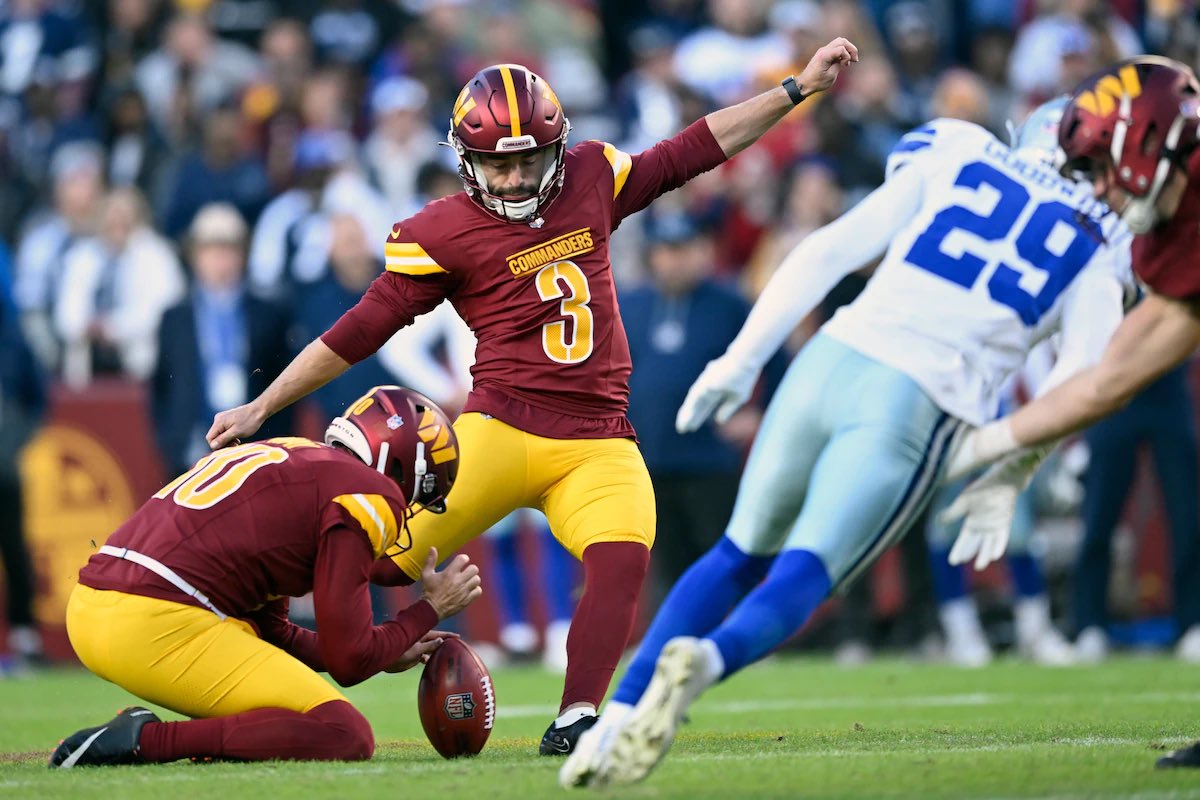Image credits: X(nfloncbs)
In a season where touchdowns are celebrated with elaborate choreography, a new trend has emerged in the NFL that bridges sports and politics—the “Trump dance.” This movement, a mimicry of President-elect Donald Trump’s signature rally moves to the tune of “YMCA,” has sparked widespread discussion about its meaning and implications.
From Las Vegas Raiders tight end Brock Bowers to Detroit Lions defenders Za’Darius Smith and Malcolm Rodriguez, and Tennessee Titans wide receivers Calvin Ridley and Nick Westbrook-Ikhine, players have performed the dance during recent games. While these moments represent only a small fraction of NFL celebrations, they have ignited debates about the intersection of sports, culture, and politics.
A Dance with Ambiguity
The Trump dance is a curious mix of subtlety and spectacle: a mild sway of the hips paired with arm punches that feel both awkward and playful. Its appearance in the NFL, however, is less about definitive political allegiance and more about the evolving cultural landscape.
Amy Bass, a professor of sport studies, highlights the ambiguity of the move. “While wearing a MAGA hat is a definitive show of support, the dance is a grayer area—mocking? Supportive? Just fun? The jury is out.”
The gesture, however, aligns with a noticeable cultural shift among young men, who form a significant portion of NFL players. A Tufts University poll revealed that 56% of men aged 18-29 voted for Trump in the recent election, a 15% increase from 2020. This growing affinity for Trump in younger demographics adds a layer of intrigue to these celebratory moves.

Image credits: X(nfloncbs)
A Shift in NFL-Trump Dynamics
The NFL’s relationship with Trump has historically been contentious. During his presidency, Trump publicly criticized the league over Colin Kaepernick’s kneeling protests against police brutality, urging team owners to “fire” players who joined such demonstrations. This tension culminated in league-wide protests and a dip in ratings tied to fans’ disapproval of the politicization of the sport.
Fast forward to today, and a subtle transformation is evident. NFL players, once hesitant to publicly associate with Trump, are now showcasing celebratory dances that echo his rallies. Even during Trump’s 2015 presidential campaign, high-profile players like Tom Brady distanced themselves from visible support, such as Brady removing a “Make America Great Again” hat from his locker after media scrutiny.
Carl Suddler, a history professor at Emory University, attributes this change to generational shifts. “A lot of these young guys, especially in the NFL, every election they ever voted in was one that had Donald Trump as a candidate,” he explained. “There’s a particular kind of distance from that moment of 2016 where you do see NFL players a little more comfortable showing their allegiance in that way.”
A Broader Cultural Narrative
The Trump dance’s spread in the NFL mirrors its visibility across other sports. UFC fighter Jon Jones performed the move after a victory, later presenting his championship belt to Trump ringside. College football quarterback Nicco Marchiol also mimicked the dance after a touchdown, with Trump himself sharing the clip on Truth Social.
These gestures have been celebrated as cultural victories by Trump supporters, despite earlier conservative calls to “keep politics out of sports.” This perceived contradiction has not gone unnoticed. University of North Carolina professor Matthew Andrews remarked, “This is definitely a contradiction of the conservative maxim to ‘keep politics out of sports.’ Over the years, what I have realized is that when someone says, ‘Keep politics out of sports,’ what they mean is, ‘Keep those politics out of sports.’”
The NFL, for its part, has distanced itself from interpreting the dance as a political statement. League spokesman Brian McCarthy categorized it simply as “a dance” and clarified that it does not violate celebration rules, which penalize only excessive, sexually suggestive, or violent displays.

Image credits: X(nfl)
Football as a Cultural Battleground
The Trump dance also highlights the ongoing tug-of-war between political affiliations and the cultural identity of football. Democrats have recently tried to associate themselves with the sport, with figures like Tim Walz portraying football-coach personas and campaigns leaning on high-profile moments involving stars like Travis Kelce and Taylor Swift. Yet, the emergence of the Trump dance underscores how football often resists being co-opted by one side of the political spectrum.
“There’s a lot of room in sport for politics,” Bass noted. “Players don’t stop being who they are, believing in what they believe in, when they hit the field.”
The Final Word
As the NFL continues to navigate the complex intersection of sports and politics, the Trump dance serves as a reminder of how cultural and generational shifts shape player behavior. Whether the moves are meant to mock, celebrate, or simply entertain, they reflect the ever-changing relationship between America’s favorite sport and its broader political narrative.
In a game defined by movement, the Trump dance is the latest step in the ongoing choreography of football and cultural identity. The question now is how long this particular dance will remain in the playbook.




I’m really inspired along with your writing talents as smartly as with the structure for your blog. Is that this a paid subject or did you modify it your self? Either way keep up the nice quality writing, it is rare to look a nice blog like this one these days!
Автоматизированное продвижение хрумером помогает увеличить количество внешних ссылок.